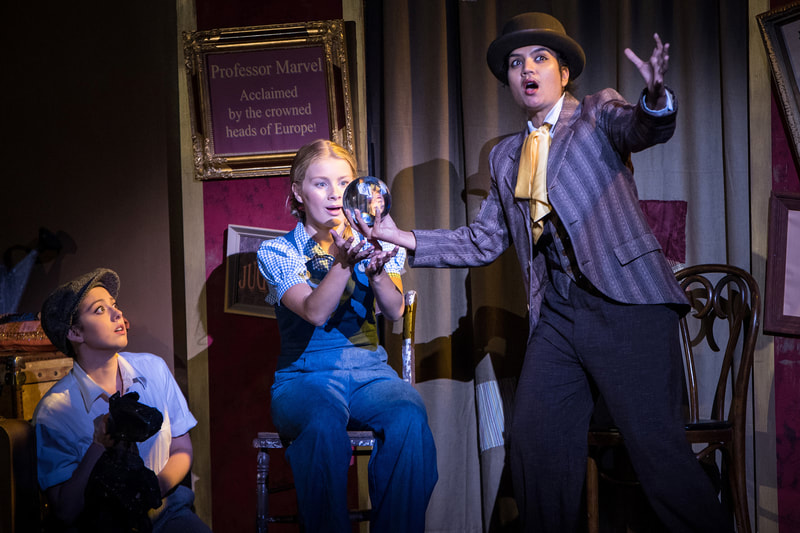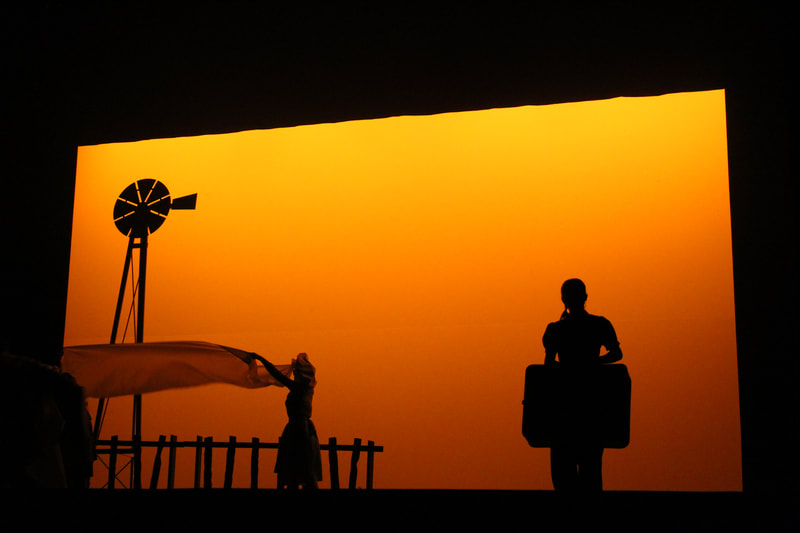The Wizard of Oz
The Family Performing Arts Center
By L. Frank Baum, adapted by John Kane, Harold Arlen, and E.Y. Harburg
Directed + Choreographed by Andrew Child
By L. Frank Baum, adapted by John Kane, Harold Arlen, and E.Y. Harburg
Directed + Choreographed by Andrew Child
|
Costumes by
Mary Hurd Props by Sara Kenney |
Scenic Design by
Michael Duarte Music Direction by Eli Bigelow |
Lighting Design by
Christopher Scully Puppets by Andrew Child + Sara Kenney |
WINNER of 2019 Broadway World Regional Awards for Best Direction and Best Creative Team
Check out the visual inspiration behind The Wizard of Oz here.
Thoughts on directing The Wizard of Oz...
The Wizard of Oz stands head and shoulders above the tall tales of the plains in American folklore as our most collectively embraced and culturally significant fairytale. Since L. Frank Baum first penned The Wonderful Wizard of Oz in 1900, the tale has snowballed through and inspired every major form of American culture, arts, and entertainment in ways no other American children’s story— neither by Dr. Seuss nor adapted by Walt Disney— ever has. Early on, the widely heralded children’s book sparked a touring Vaudeville musical and subsequent silent film version, whose popularity then inspired the 1939 MGM movie musical version with which most of us are familiar. That movie, in turn, inspired several major Broadway musicals and blockbuster films. In creating this production, we have explored forms of entertainment ranging from Vaudeville to Hollywood that have left an indelible mark on our perceptions of Baum's imaginary land.
The story of Dorothy has been embraced by nearly every faction of American life. Children’s infatuation with the story has continued 80 years after the movie premiered, and nearly 120 years after the book’s first publication. Interestingly, adults seem to have an uncanny ability to find a message within the story of Oz, but Baum’s original introduction to the book tells us “…the story of The Wonderful Wizard of Oz was written solely to please children of today.” Why, then, is Oz so regularly referenced by adults trying to prove a point? MGM writer Harold Arlen penned the famous catchphrase “there’s no place like home” at a time when America was overcoming a depression and preparing to join the world at war. Campaigns for “America First” were running rampant before Dorothy was told never to “look further than your own backyard.” Baum’s intentions to create a simply wonderful story that delighted and frightened children (without “teaching” them) have clearly been challenged by many writers, politicians, and artists of the times.
In contributing in some small way to the countless adaptations of this story, it is my most sincere hope that FPAC’s production is able “to please children of today.” Additionally, in honor of the countless groups who have found solace and comfort in the adventures of Dorothy and her friends, I hope that on stage today you see a presentation of your America - a world where people of all kinds can be magical, women can be the most powerful and revered beings, and a girl from a far away land can save the day.







